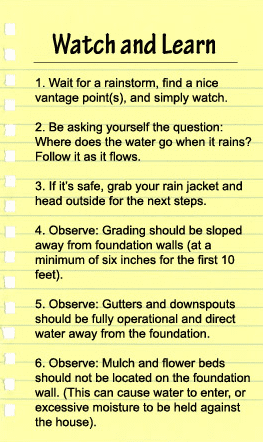If you live in Arizona but don’t have a sump pump already installed in your home, you might be wondering whether you need one or not.
Just because you live in Arizona doesn’t necessarily mean you need a sump pump. But with our infamous monsoon season, there’s a good chance you’d benefit from installing one.
If any of the following apply to your home, you should install a sump pump:
- You have a damp basement or parts of the house have flooded/had water damage before
- Your home has negative grading
- Your home/neighborhood has a high water table
3 Issues that Determine if You Should Have a Sump Pump in Your AZ Home
Low-lying parts of your home have flooded or had water damage before
Have you ever had flooding in your basement, crawl space, or patio?
If these places have flooded (even once) or have already had water damage, you need to install a sump pump.
Why?
Because even if the flooding was minor, leaving these areas wet can cause mold to grow, wood to rot, and pests to infest your home, spelling big trouble for your health, your home, and your safety.
Your home has negative grading
The “grading” around your home just refers to the level of the ground. “Negative” grading is bad because it means that the ground slopes toward your home, directing storm water straight towards your house.
So, how do you know if your home has negative grading?
It’s simple: watch where water flows when it’s raining. If water pools near your home, you most likely have negative grading and should invest in a sump pump.
Here are some tips from US Inspect that will help you determine your home’s grading:
Source: www.usinspect.com
Your home/neighborhood has a high or “shallow” water table
The “water table” simply refers to the point below the earth’s surface where the ground starts to become completely saturated with water.
Think of a clear cup that’s holding water. The rim of the cup is the earth’s surface and the water line is the “water table”.
But depending on the amount of rainfall, that water line changes, right?
The more rain you get (i.e. during monsoon season), the higher that water table gets. And the higher the water table gets the closer water is to the rim of the cup (a.k.a the surface of the ground), increasing the risk of flooding.
Source: DNRC
Basically, the higher or more “shallow” the water table, the more likely your yard or property is to flood when the rains come.
So how do you know if your home or neighborhood has a high water table?
Just contact the Arizona Department of Water Resources’ groundwater data inventory to get an idea of the water table levels near you.
But because the levels are always rising, we suggest just keeping an eye out for water that pools in your yard after it rains.
Water that pools on the surface of your yard and stays up to 2 days usually means the water table has temporarily risen above the grade of your yard. Basically, this means that your home’s water table is (and most likely will always be) very high during and after rainfall.
If you have a high water table and negative grading, you need to invest in a sump pump as soon as possible to protect your belongings, your home, your health and your safety.
Have one of these 3 issues? Have an AZ plumber install a sump pump
If you have low-lying areas in your home that is prone to wetness or flooding, negative grading or a high water table, you need to install a sump pump in your AZ home.
Need professional advice on the sump pump that is best for your needs?
Contact the professionals at George Brazil. We’ll send over one of our certified AZ plumbers to inspect your home and install a reliable sump pump that fits your needs.

